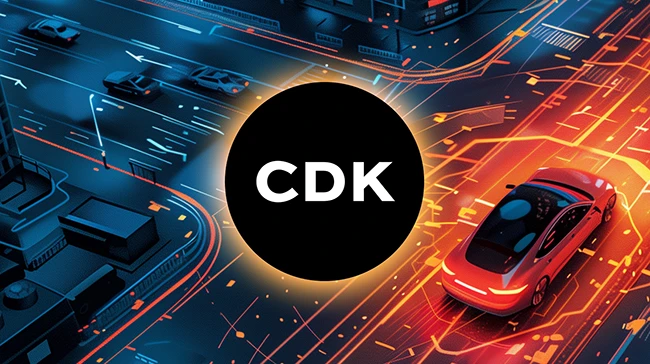
In June 2024, the automotive industry was rocked by a significant cybersecurity incident involving CDK Global, a leading provider of software solutions for car dealerships. This attack has become a case study in the growing threat landscape for businesses across various sectors. As cyber threats evolve, understanding incidents like the CDK cyber attack is crucial for organizations looking to strengthen their defenses. This blog will delve into the specifics of the attack, its impact on the automotive sector, and the essential strategies for a robust data breach response.
Understanding the CDK Cyber Attack
On June 18 and 19, 2024, CDK Global experienced a ransomware attack that severely disrupted operations at over 15,000 car dealerships across North America. The attack was reportedly orchestrated by a group known as BlackSuit, which demanded tens of millions of dollars in ransom to restore access to CDK’s systems. This incident serves as a stark reminder of the escalating cybersecurity threats that businesses face today.
The ramifications of the attack were profound. Operations critical to dealership functioning, such as invoicing, payroll management, and inventory updates, were halted. Some dealerships reported a staggering 50% drop in sales due to the inability to process transactions. The attack not only crippled business operations but also jeopardized sensitive customer data, highlighting vulnerabilities in automotive cybersecurity.
The Nature of Ransomware Attacks
Ransomware attacks have become increasingly common, representing a significant portion of the broader cybersecurity threats facing organizations. In these attacks, cybercriminals infiltrate a victim’s systems, encrypt critical data, and demand a ransom for its release. The CDK cyber attack incident is a prime example of this modus operandi.
Key Features of Ransomware Attacks
Infiltration
Attackers typically exploit vulnerabilities in a company’s network to gain access. In the case of CDK cyber attack, specific technical details regarding the exploited vulnerabilities have not been publicly disclosed.
Data Encryption
Once inside, attackers encrypt critical data, rendering it inaccessible to the organization.
Ransom Demand
The attackers then demand payment, usually in cryptocurrency, to decrypt the data.
Potential Secondary Attacks
As seen with CDK cyber attack, companies may face further attacks if their systems are not adequately isolated or if recovery efforts are interrupted.
Impact on Automotive Cybersecurity
The CDK cyber attack underscores the pressing need for enhanced automotive cybersecurity measures. The automotive sector has increasingly become a target for cybercriminals due to the valuable data handled by dealerships and the interconnected nature of modern automotive systems.
Industry Vulnerabilities
Data Sensitivity
Car dealerships manage sensitive customer information, including financial records and personal details. A breach can lead to identity theft and significant reputational damage.
Interconnected Systems
As dealerships integrate more technology—such as connected vehicles and IoT devices—the attack surface expands, increasing vulnerabilities.
Inadequate Preparedness
Many organizations in the automotive sector lack comprehensive cybersecurity strategies, leaving them exposed to attacks.
Developing an Effective Data Breach Response
An effective data breach response plan is essential for any organization, particularly in the wake of a CDK cyber attack. Here are key components of a robust response strategy:
Immediate Containment
Organizations must act quickly to contain the breach. This may involve shutting down affected systems and isolating compromised networks to prevent further damage.
Assessment and Analysis
Conduct a thorough investigation to determine the scope of the breach, how it occurred, and what data was compromised. This analysis is crucial for informing future security measures.
Communication
Transparency is critical during a data breach. Organizations should communicate with affected parties, including customers and stakeholders, about the nature of the breach and the steps being taken to mitigate its impact.
Legal Considerations
Consult legal counsel to understand the regulatory implications of the breach and to ensure compliance with data protection laws.
Recovery and Restoration
After containment and analysis, organizations should focus on restoring affected systems and data. This may involve data recovery measures and ensuring that systems are secure before bringing them back online
The Importance of an Incident Response Plan
Having a well-defined incident response plan is critical for organizations to effectively manage CDK cyber attacks. Such a plan should encompass the following elements:
Preparation
Organizations should train employees on cybersecurity awareness and establish protocols for reporting suspicious activities.
Identification
Quickly identify the nature and scope of any incident to facilitate a swift response.
Containment and Eradication
Implement strategies to contain the breach and remove any malicious elements from the system.
Recovery
Develop a strategy to restore normal operations while ensuring that the systems are secure.
Post-Incident Review
After the incident, conduct a review to assess the response and identify areas for improvement. This can help strengthen defenses against future attacks.
Conclusion
The CDK cyber attack serves as a wake-up call for businesses across industries, especially those in the automotive sector. As cyber threats continue to evolve, it is essential for organizations to prioritize cybersecurity and develop comprehensive strategies to protect their data and operations.
By understanding the nature of cybersecurity threats, recognizing the implications of ransomware attacks, and implementing effective data breach response and incident response plans, businesses can better equip themselves to face the challenges of the digital age.
Organizations must also recognize that automotive cybersecurity is not just an IT issue but a business imperative that requires the involvement of all employees, from leadership to frontline staff. Investing in cybersecurity measures, staying informed about emerging threats, and learning from incidents like the CDK attack will help companies not only survive but thrive in an increasingly complex and connected world.





